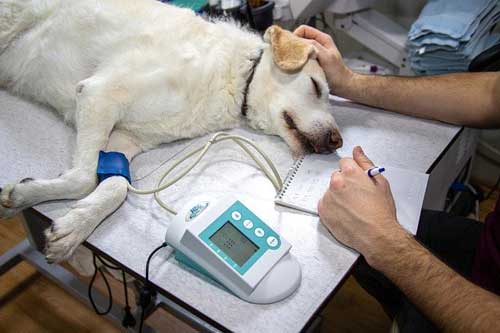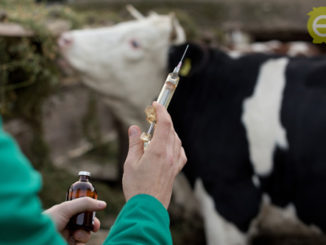Infectious canine hepatitis (ICH) is an acute liver infection caused by Canine Adeno Virus 1 and is characterized by pyrexia, vomition, abdominal pain, corneal oedema and convulsion. The virus is spread in the faeces, urine, blood, saliva, and nasal discharge of infected dogs. It is contracted through the mouth or nose, where it replicates in the tonsils. The virus then infects the liver and kidneys. The incubation period is 4 to 7 days.
Symptoms include fever, depression, loss of appetite, coughing, and a tender abdomen. Corneal edema and signs of liver disease, such as jaundice, vomiting, and hepatic encephalopathy, may also occur. Severe cases will develop bleeding disorders, which can cause hematomas to form in the mouth. Death can occur secondary to this or the liver disease. However, most dogs recover after a brief illness, although chronic corneal edema and kidney lesions may persist.

Diagnosis is made by recognizing the combination of symptoms and abnormal blood tests that occur in infectious canine hepatitis. A rising antibody titer to CAV-1 is also seen. The disease can be confused with canine parvovirus because both will cause a low white blood cell count and bloody diarrhoea in young, unvaccinated dogs.
Treatment is symptomatic. Most dogs recover spontaneously without treatment. Prevention is through vaccination (ATC vet code QI07AA05 (WHO) and various combination vaccines). Most combination vaccine for dogs contain a modified canine adenovirus type-2.CAV-2 is one of the causes of respiratory infections in dogs, but it is similar enough to CAV-1 that vaccine for one creates immunity for both. CAV-2 vaccine is much less likely to cause side effects than CAV-1 vaccine. One study has shown the vaccine to have a duration of immunity of at least four years. CAV-1 is destroyed in the environment by steam cleaning and quaternary ammonium compounds. Otherwise, the virus can survive in the environment for months in the right conditions. It can also be released in the urine of a recovered dog for up to a year.
A three months old 10.0 kg body weight unvaccinated Non-descript dog was presented to Small Animal Medicine Outpatient Unit of Orathanadu Veterinary College with the history of Inappetance, Vomiting, Subcutaneous odema in the ventral part of neck, blindness and bilateral bluish discolouration of eyes. Clinical findings revealed pyrexia, subcutaneous neck oedema and corneal oedema. Complete blood count revealed reduction in Hb (7.7 g/dl), PCV (24.2%), RBC (3.85m/cmm) & leucopenia. Serum biochemistry revealed elevated ALT (204 U/L), ALP (1428 U/L), Cholesterol (329 mg/dl),Total bilirubin (1.35 mg/dl) & direct bilirubin (1.28 mg/dl). Ultrasound examination revealed hepatomegaly. Wet film examination & Woo’s method were done to rule out trypanosomiasis.
Based on history, clinical signs & laboratory findings the case was tentatively diagnosed as ICH. Nasal swab was collected for detection of canine Adeno Virus and confirmed as ICH by PCR. The animal was treated symptomatically with fluid therapy, Inj: V-tri @ 25 mg/kg bwt, Inj: Amikacin @ 10 mg/kg bwt, & Inj: Pantaprazole @1.0 mg/kg bwt, Supportive therapy using liver tonics & Hematinic. Dog showed clinical improvement as well as hematological parameters. Uneventful recovery was observed after 15 days.
|
The content of the articles are accurate and true to the best of the author’s knowledge. It is not meant to substitute for diagnosis, prognosis, treatment, prescription, or formal and individualized advice from a veterinary medical professional. Animals exhibiting signs and symptoms of distress should be seen by a veterinarian immediately. |






Be the first to comment